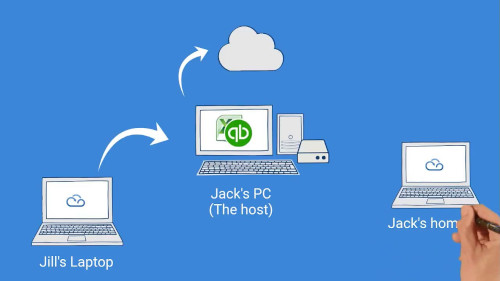When work from home first became the norm thanks to the lockdown many people were relieved. At first, it meant more time for personal life. Mid-day yoga or grocery shopping. It sounded like a simple concept. Only for people to realize the importance of the in-built office structures and boundaries that were previously taken for granted.
Don’t get it wrong, remote work has so many benefits both to the business and employees. But recreating the required boundaries when working from home remains a challenge. And now, work and life are more intertwined thanks to cloud technology and the drastic increase in remote work.
As a remote employee, there is no physical separation of space and time like you have in the office. The morning routine has turned to a shuffle of slippers and moving to the next room. Moving your mind to the productivity zone while dealing with housemates and children is almost impossible. By the time you get focused it’s 6 p.m. and you haven’t even had your lunch yet. Getting work done with the constant interruptions on day-to-day is difficult.
According to the National Statistics in the US, there is an increase in the number of workers experiencing work-life stress. As a result, work-life balance has become a sort after quest by many workers.
What is work-life balance?
In layman terms, it is having time for both work and personal life without opposition between other life roles and your work. Generally, an equilibrium state where the demands of your professional life, family life, and personal life are equal.
It is the key to employee wellbeing.
A study done by Buffer showed that 22% of remote workers are struggling to unplug from work. Also, remote employees are facing other challenges like loneliness and anxiety therefore affecting their mental wellbeing and productivity. This makes setting boundaries more important now than ever before.
Brian Dyson, former Vice Chairman and COO of Coca Cola said it best:
“Imagine life as a game in which you are juggling some five balls in the air. You name them — work, family, health, friends, and spirit and you’re keeping all of these in the air. You will soon understand that work is a rubber ball. If you drop it, it will bounce back. But the other four balls are made of glass. If you drop one of these, they will be irrevocably scuffed, marked, nicked, damaged, or even shattered. They will never be the same. You must understand that and strive for balance in your life.”
How to set healthy boundaries for work-life balance
Physical and mental space de-cluttering
If you’ve watched Marie Kondo’s Tidying Up on Netflix you might have a clue as to how decluttering helps people get more organized and spark joy. She’s now showing the business world how to declutter their digital and physical workspaces to help them achieve a successful career.
According to Harvard Business Review, decluttering decreases stress and anxiety helping you focus better hence you’re more productive at work. Most people might not have a dedicated workspace at home but you can organize and declutter an area to make it more conducive for work.
Create a routine
Working from home ensures you don’t have to commute somewhere for you to start your workday. However, it’s so important to simulate the beginning and end of your working hours. If you don’t, you may find yourself still in your pajamas at noon.
One of the do’s of remote work is having a routine and sticking to it. Wake up early, if you’re an exercise person, have your sweat session or if not, meditate or do your morning ritual. Then shower, do your hair and makeup, dress up, and have some breakfast. After that, feel free to jump into your work. Of course, it might not always be picture perfect but aim to start work once you’ve done your self-care routine.
You can always try out the Pomodoro technique that helps you manage your time efficiently for more productivity.
Have work and communication rules for your home and colleagues
This might be a bit tricky as it involves some collaboration from others. Boundaries at home don’t mean you have a wall so high that no one can talk to you. But you let your family and friends know your work time and ask them to respect it. Let them know when you need silence and minimal distractions. Remember no one can respect your boundaries if you haven’t communicated them.
Your team members and colleagues as well should come to an agreement on when to communicate and the platforms to do it. Are you going to collaborate on Trello? Chat on Slack? Have meetings on Zoom? Be very specific to ensure everyone has clarity on all communication expectations.
Also, let the entire team know when you’re signing off for the day. A simple ‘off work till tomorrow at 9 a.m. ET’ will help them turn off work.
Create time for yourself
You can’t give from an empty cup. You need to recharge, process, and rest o be able to tackle your workdays like a champ. Working from home doesn’t exempt you from leave days. Not having some downtime is a recipe for burnout. In the Scientific American article, Ferris Jabr emphasizes the importance of downtime.
Why Your Brain Needs More DowntimeFerris JabrResearch on naps, meditation, nature walks and the habits of exceptional artists and athletes reveals how mental…
“Downtime replenishes the brain’s stores of attention and motivation, encourages productivity and creativity, and is essential to both achieve our highest levels of performance and simply form stable memories in everyday life … moments of respite may even be necessary to keep one’s moral compass in working order and maintain a sense of self.”
As work from home seems to be the new normal, let’s not allow it to bleed into our family and personal life. Flexible work allows you the freedom to move things around without negatively affecting your work. We can always make some changes to achieve work-life balance. The only question is “do we really want to?”





